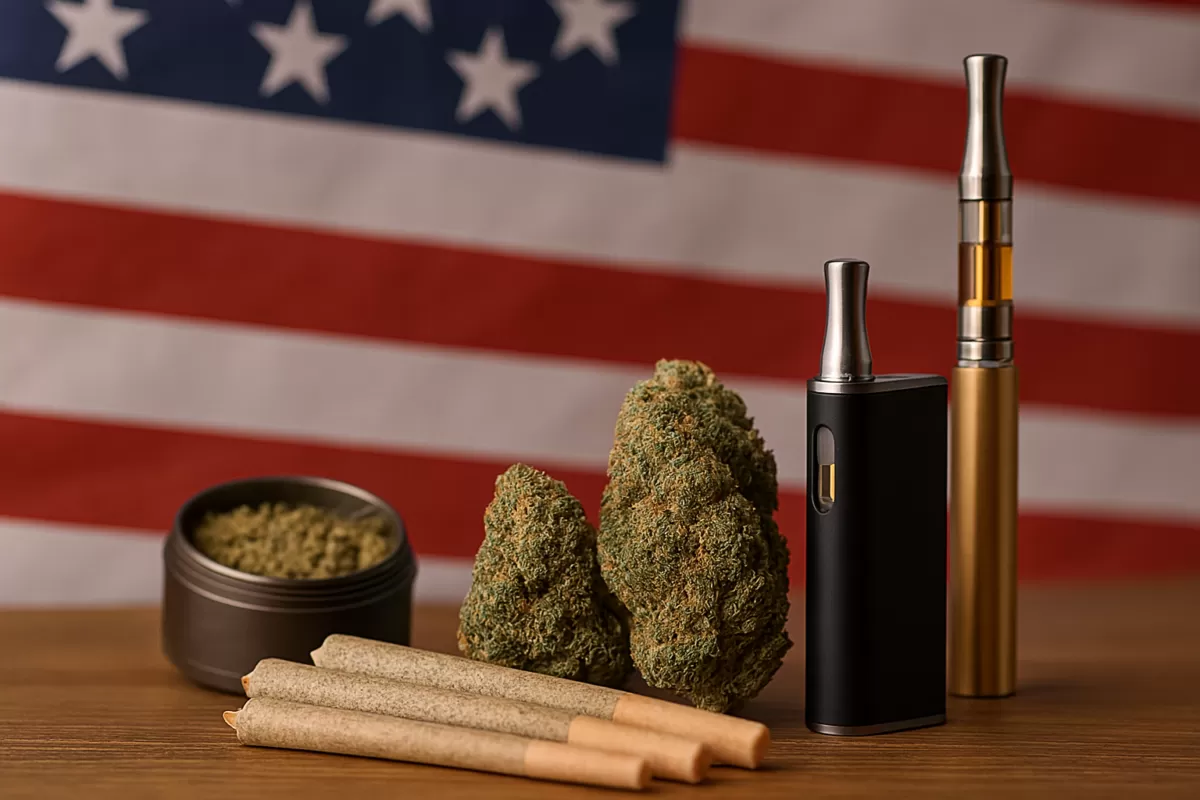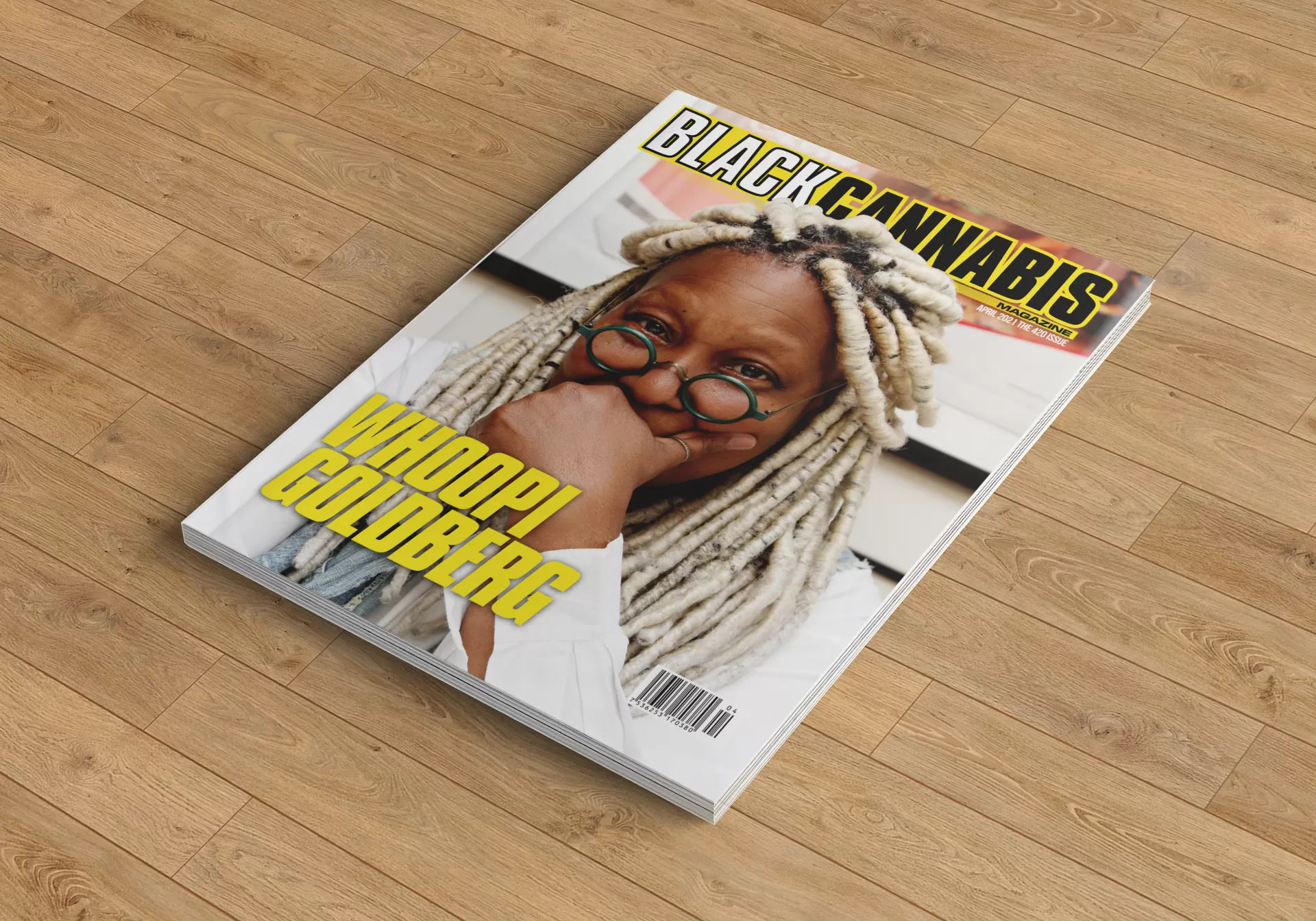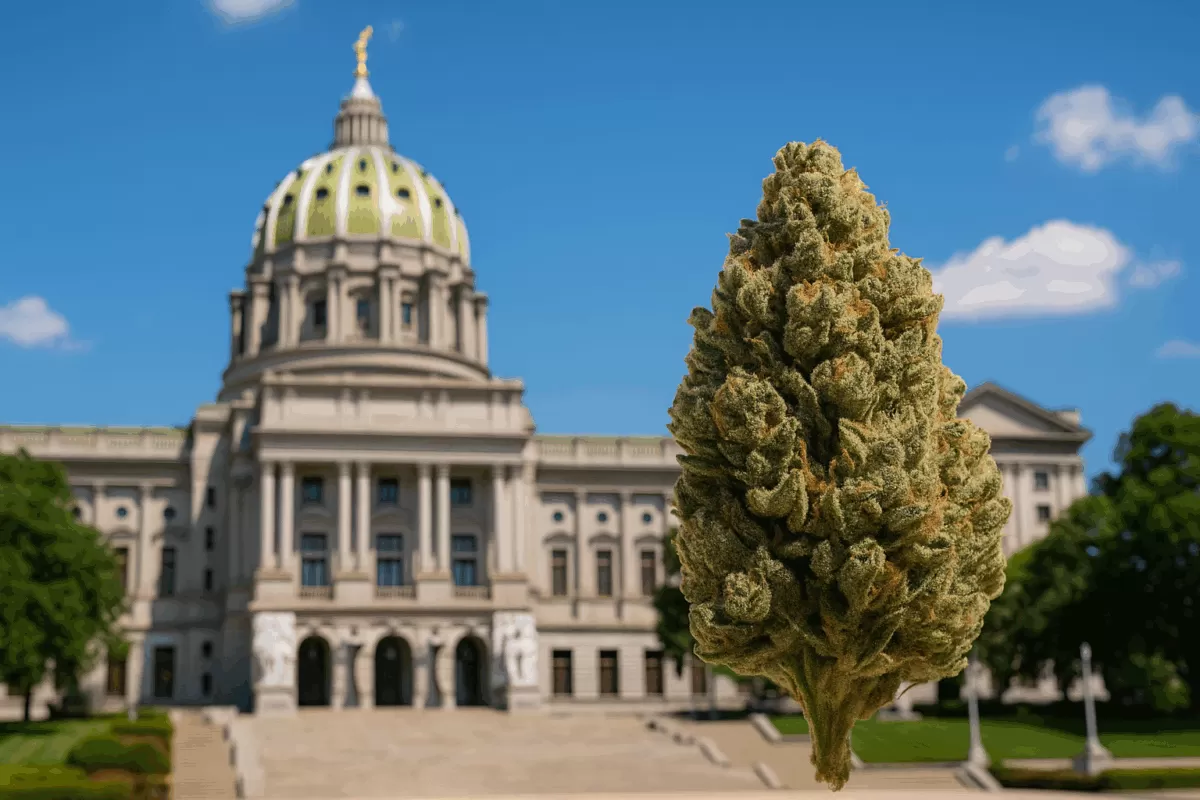Thinking about sparking one up to take the edge off this economic chaos? You might want to ration that pre-roll. A fresh wave of tariffs imposed by Donald Trump is about to quietly—but powerfully—hit the U.S. cannabis industry where it hurts: packaging, production, and ultimately, your wallet.
This isn’t some abstract trade policy issue. It’s about real costs stacked on everyday items like vape pens, grinders, tins, rolling cones, and even some growing materials. Most of it comes from overseas. And thanks to these new tariffs, it’s about to cost more.
What the Tariffs Actually Mean for Cannabis
The cannabis industry may look local—think Cali, Oregon, Colorado—but it operates on a global supply chain. Much of the gear that makes your favorite products possible is imported. Vape batteries, cartridges, glass tips, and metal tins are often manufactured in China. Components like wood, compost, and peat used in growing operations often come from Canada or Mexico. Tariffs on those countries, along with China and the EU, stack costs on items already strained by inflation and compliance.
Cannabis packaging, already one of the biggest production expenses, just got even pricier. Brands depending on imported materials for everything from jars to child-resistant bags are now being forced to reevaluate suppliers or swallow the extra costs—neither of which is easy in a market where margins are already razor-thin.
Consumers Will Feel It First
Let’s keep it real: most cannabis brands don’t have the breathing room to absorb this hit. Unlike other industries, cannabis can’t rely on traditional banking, write off normal business expenses, or move money easily. The entire ecosystem is built on hustle and strategy.
So when costs go up by 10 to 15% across packaging and hardware, consumers will be the first to feel it. Whether it’s through pricier eighths, reduced promotions, or product shrinkage, the squeeze is coming. And it won’t just be luxury brands. Even your favorite budget options will likely inch up.
The Illicit Market Just Got More Attractive
This is where things get dicey. Legal cannabis is already battling a thriving underground scene. Why? Because in many places, it’s still easier—and cheaper—to grab bud from the plug than the dispensary. Now throw in price hikes, and some consumers may start asking if going legal is even worth it.
That shift back to the illicit market doesn’t just hurt brands—it undermines legalization itself. The legal market was supposed to bring order, regulation, and safety. But if pricing becomes a barrier, a major part of the market will drift further away from the very system that was designed to protect them.
Tariffs Are Touching Every Part of the Process
This isn’t just about smoking—it’s about growing, processing, and distribution. Growers rely on imported materials like peat moss and fertilizers. Manufacturers build out facilities using imported glass and metals. Even the decorative wood on premium pre-roll packaging often comes from abroad. When tariffs hit every stop in the supply chain, the final product becomes harder to price competitively.
And because many brands use international partners to assemble and package their products before they hit U.S. shelves, there’s no clean way around the cost increases. Every stop—from factory to fulfillment—is taxed.
Cannabis Stocks Already Reacting
Publicly traded cannabis companies took a noticeable dip immediately after the tariffs were announced. Investors saw the writing on the wall: more costs, more complexity, more reasons to worry. This reaction isn’t just about immediate losses—it reflects deeper concerns about long-term sustainability.
Brands that were already struggling to meet quarterly goals now face a new, unplanned expense. For those still trying to turn a profit in an industry dominated by taxes, red tape, and oversupply, these tariffs feel like salt in the wound.
What Happens Next?
Cannabis companies are scrambling for options. Some will explore domestic alternatives for hardware and packaging—but that’s not always possible or affordable. Others may shift operations or try to renegotiate deals, but these aren’t overnight fixes.
The most likely outcome? Higher costs get pushed downstream. Consumers will pay more at the register, and brands will trim wherever they can to stay afloat. Expect smaller pre-rolls, lower THC percentages, or simpler packaging as companies try to protect their margins.
It’s also a wake-up call for the industry: dependency on international manufacturing is a vulnerability. And without federal legalization or financial protections, cannabis brands remain uniquely exposed to global shifts like this.
Why This Matters for the Culture
Cannabis isn’t just a product—it’s a culture, a medicine, and for many, a livelihood. These tariffs might seem like just another headline, but they land hard on communities that have already sacrificed the most in the name of this industry.
Equity operators, small business owners, and legacy growers don’t have the capital cushions to weather price swings like big MSOs do. For them, every added cost could be the difference between survival and shutdown. When policies don’t account for the reality of who’s actually building this industry, the consequences get real fast.
Bottom Line:
This tariff move isn’t just political. It’s personal. From the way we grow it to how we roll it up, every part of the cannabis experience just got more expensive. And for an industry still trying to find its footing, that’s a problem.
As always, we’ll keep reporting with clarity, edge, and community in mind.
Black Cannabis Magazine is your go-to platform for cannabis culture, news, and lifestyle content with a focus on diversity and inclusion. For more information, visit www.blackcannabismagazine.com.
Copyright 2025 Black Cannabis Magazine. Distributed by Hazey Taughtme, LLC.












